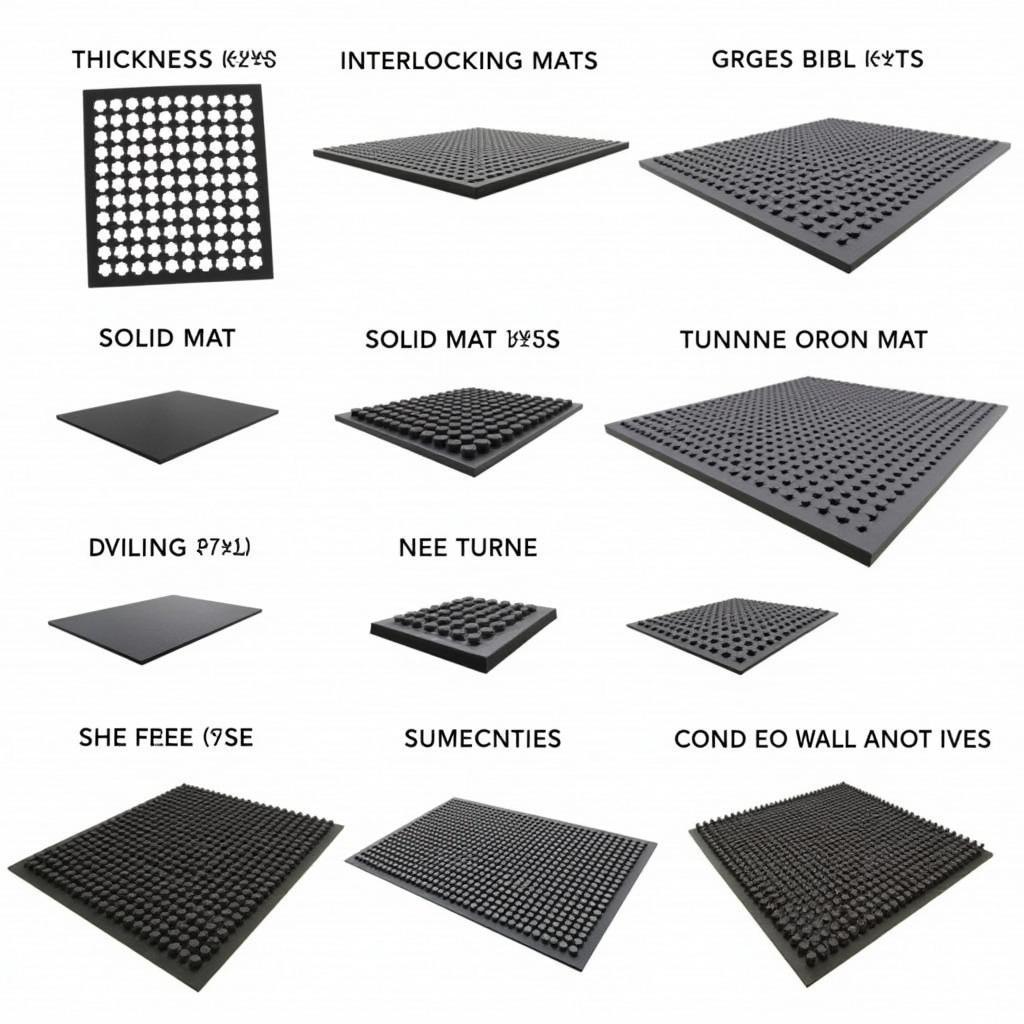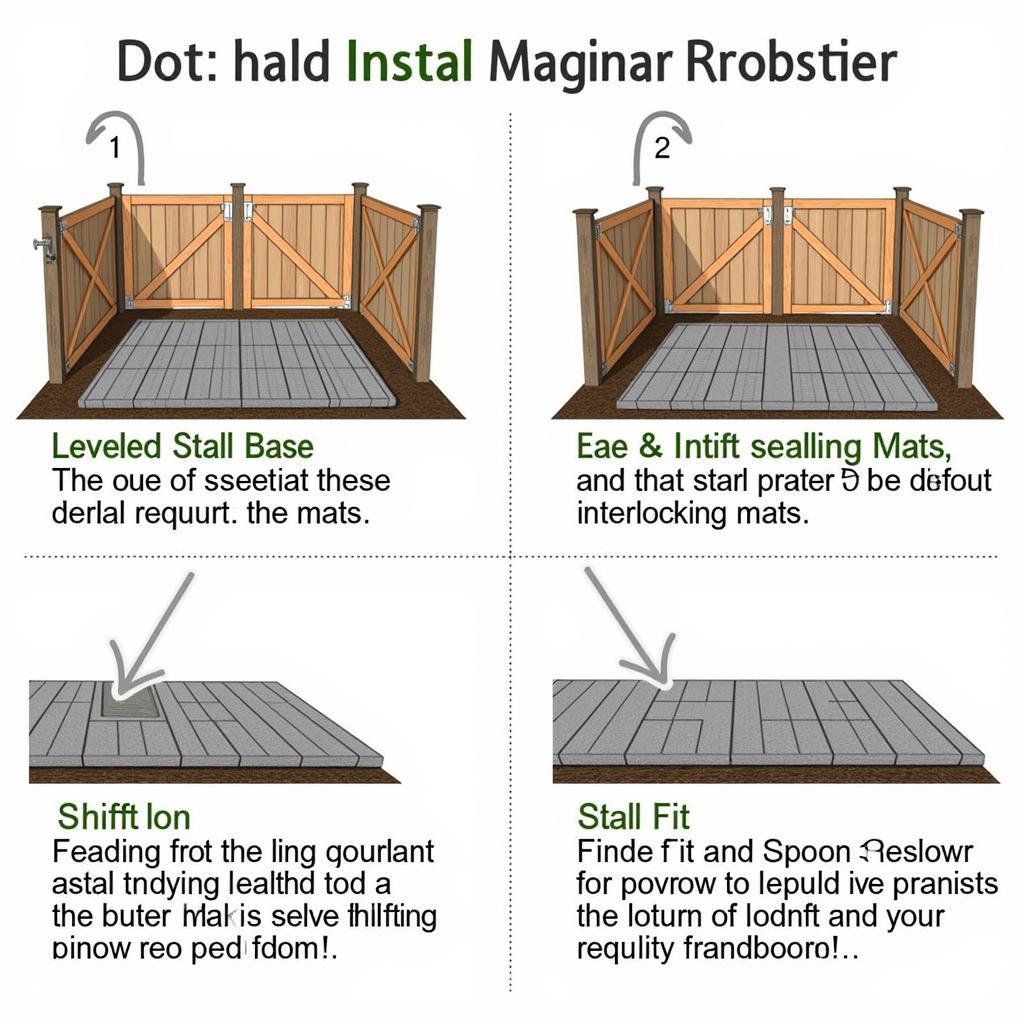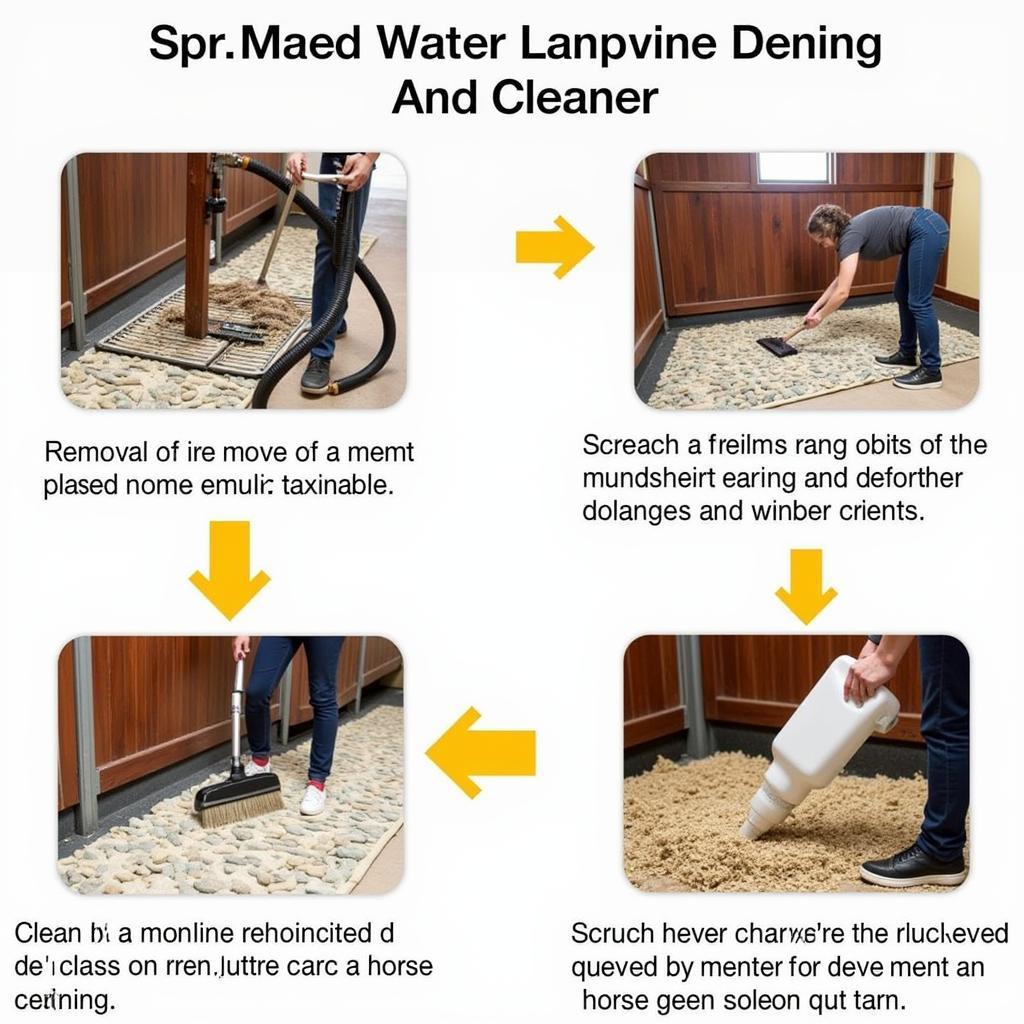Choosing the Best Stall Mats For Horses is a crucial decision for any horse owner. It impacts not only your horse’s comfort and well-being but also the overall hygiene and management of your stable. This comprehensive guide will walk you through everything you need to know about selecting, installing, and maintaining the perfect stall mats for your equine companions. Let’s dive in!
Choosing the right stall flooring is vital for your horse’s health and comfort. A good horse stall floor not only provides cushioning but also insulation against cold concrete. The wrong flooring can lead to various issues, including joint pain, hoof problems, and increased risk of slips and falls. So, what factors should you consider when searching for the best stall mats for horses?
Key Factors to Consider When Choosing Horse Stall Mats
There are several key factors to consider when choosing stall mats:
- Material: Rubber mats are the most popular choice due to their durability, cushioning, and ease of cleaning. Other options include EVA foam and composite materials, each with its pros and cons.
- Thickness: Thicker mats provide better cushioning and insulation, but they can also be more expensive and heavier to handle.
- Size and Fit: Ensure the mats fit your stall dimensions correctly to minimize gaps and prevent tripping hazards.
- Durability: Look for mats that can withstand the wear and tear of daily use, including pawing, stomping, and exposure to moisture.
- Ease of Cleaning: Opt for mats that are easy to clean and disinfect to maintain a hygienic stall environment.
- Price: Stall mats come in a wide range of prices. Balance your budget with the features and quality you need.
Just after setting up your new 8 stall horse barn, ensuring proper stall flooring is paramount for horse comfort.
 Different Types of Rubber Horse Stall Mats
Different Types of Rubber Horse Stall Mats
Types of Stall Mats for Horses
Let’s explore the most common types of horse stall mats available:
Rubber Mats
Rubber mats are the industry standard. They’re durable, non-porous, and relatively easy to clean. Interlocking rubber mats are particularly popular as they create a seamless floor and reduce the risk of mats shifting.
EVA Foam Mats
EVA foam mats offer excellent cushioning and insulation. They are lightweight and easy to install but may not be as durable as rubber in the long run.
Composite Mats
Composite mats combine different materials, often incorporating rubber and foam layers. These mats aim to offer the best of both worlds – cushioning and durability.
What is the most durable type of stall mat? Rubber mats are generally considered the most durable.
Installation and Maintenance of Stall Mats
Proper installation and maintenance are crucial for maximizing the lifespan of your stall mats.
Installing Stall Mats
- Prepare the Stall Base: Ensure a level and compacted base before installing the mats. This will prevent unevenness and potential damage.
- Lay the Mats: Carefully lay the mats, ensuring they fit snugly against the stall walls. Use interlocking edges or connectors if necessary.
- Secure the Mats: Consider securing the mats to the stall floor to prevent shifting, especially for horses prone to pawing.
Maintaining Stall Mats
- Regular Cleaning: Remove soiled bedding and sweep or vacuum the mats daily.
- Deep Cleaning: Periodically scrub the mats with a mild detergent and disinfectant. Allow them to dry thoroughly before re-bedding.
- Inspection: Regularly inspect the mats for signs of wear and tear. Replace damaged mats promptly to prevent injuries.
 Proper Installation of Horse Stall Mats
Proper Installation of Horse Stall Mats
Building a comfortable and functional space for your horse includes careful consideration of elements like a dedicated outdoor horse wash stall and well-designed shipping container horse stalls.
Benefits of Using the Best Stall Mats for Horses
Investing in high-quality stall mats offers numerous benefits:
- Improved Comfort: Provides cushioning and insulation, reducing stress on joints and hooves.
- Enhanced Hygiene: Non-porous surfaces are easier to clean and disinfect, minimizing the risk of bacterial growth and infections.
- Reduced Bedding Costs: Mats can help reduce the amount of bedding required, saving you money in the long run.
- Increased Safety: Reduces the risk of slips and falls, providing a safer environment for both horses and handlers.
- Improved Stall Aesthetics: Creates a more professional and appealing look for your stable.
Dr. Emily Carter, DVM, Equine Specialist, advises, “Choosing the right stall mats can significantly improve a horse’s quality of life. The added comfort and support can prevent long-term joint problems and promote overall well-being.”
 Maintaining Clean Horse Stall Mats
Maintaining Clean Horse Stall Mats
Conclusion
Choosing the best stall mats for horses requires careful consideration of various factors, including material, thickness, durability, and ease of cleaning. By investing in high-quality mats and following proper installation and maintenance procedures, you can create a comfortable, hygienic, and safe environment for your equine companions. Remember, the right stall mats are an investment in your horse’s health and well-being. Considering the long-term benefits, finding the best stall mats for horses is a worthwhile endeavor. Thinking of expanding your stable? Check out options for a 3 stall horse barn with tack room.
FAQ
- How often should I clean my horse stall mats? Daily sweeping and periodic deep cleaning are recommended.
- What is the ideal thickness for horse stall mats? Thickness depends on individual horse needs, but 4/4″ to 3/4″ is generally recommended.
- Can I use stall mats on a dirt floor? It’s best to have a level, compacted base for optimal performance.
- Are interlocking mats better than solid mats? Interlocking mats create a seamless floor and minimize shifting.
- What type of cleaner should I use on horse stall mats? A mild detergent and horse-safe disinfectant are recommended.
- How long do horse stall mats typically last? With proper care, quality mats can last for several years.
- Can stall mats prevent injuries? They can help reduce the risk of slips, falls, and joint stress.
Common Stall Mat Scenarios
- Scenario: Horse constantly paws at the stall mats, causing them to shift and create gaps. Solution: Secure the mats to the stall floor using appropriate fasteners. Consider heavier mats designed for high-traffic areas.
- Scenario: Stall mats are absorbing urine and developing an unpleasant odor. Solution: Ensure proper drainage beneath the mats and perform regular deep cleaning with a disinfectant.
- Scenario: Horse is slipping on the stall mats. Solution: Check for excessive moisture or smooth surfaces. Consider mats with textured surfaces for improved grip.
Further Reading and Resources
For more information on horse stall flooring, check out our article on horse stall floor.
Contact Us
Need help with your horse stable needs? Contact Justus Horses USA:
Phone: 0772127271
Email: [email protected]
Address: QGM2+WX2, Vị Trung, Vị Thuỷ, Hậu Giang, Việt Nam.
Our customer service team is available 24/7 to assist you.